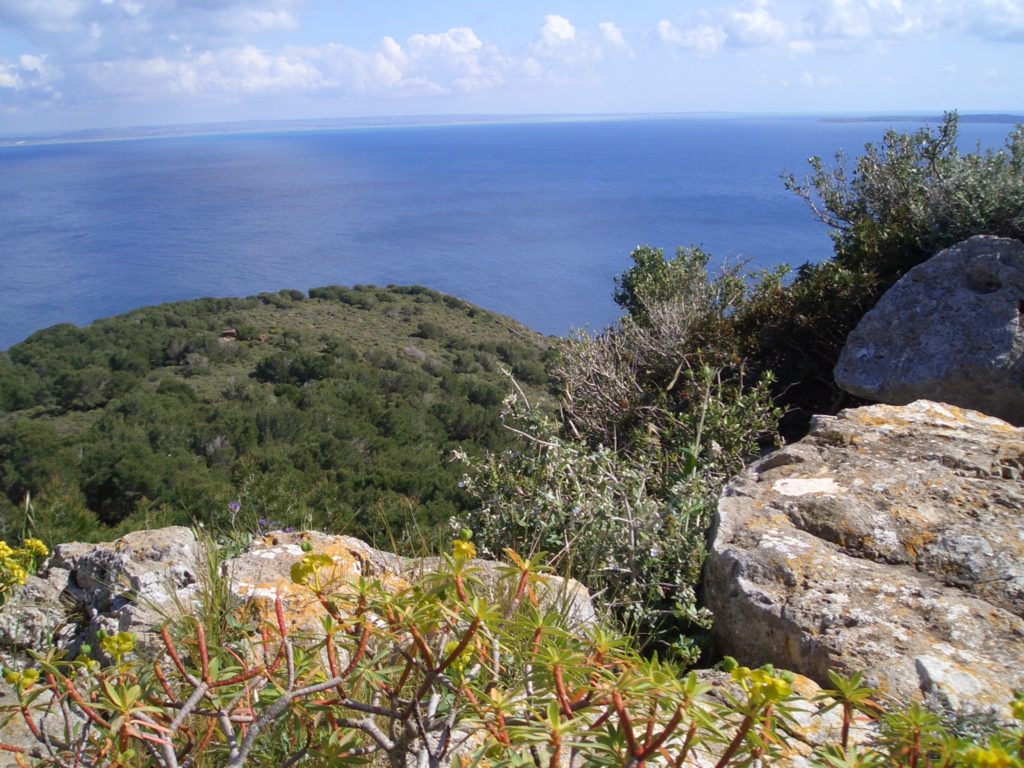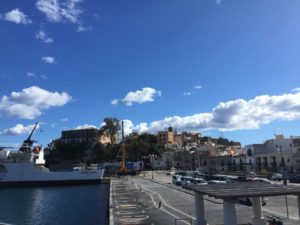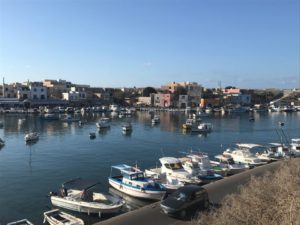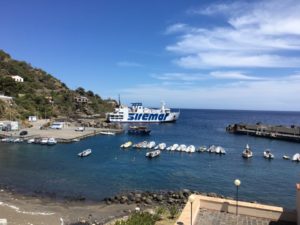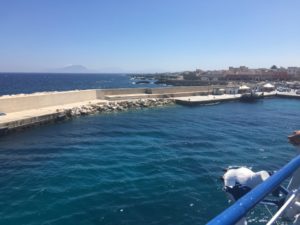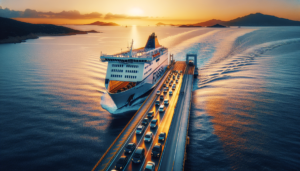What to do in Levanzo and Marettimo
As for the things to do and see in the Egadi Islands, as well as in Favignana, Levanzo and Marettimo also have plenty of pleasant activities to do and places of interest to visit. It is not difficult to reach the archipelago of the free municipal consortium of Trapani from the island of Sicily, and there are also routes that connect the three islands to each other (even the details on inland navigation can be found at the previous link). Let’s see what we can do on the two smaller islands (excluding islets and rocks) of the archipelago. Thanks to the maritime connections operated by hydrofoils and ferries to the Egadi Islands, you can choose, according to your tastes, any of the three islands as a base for your stay.
Book a ferry
5 things to do in Levanzo
1) Go to the beach
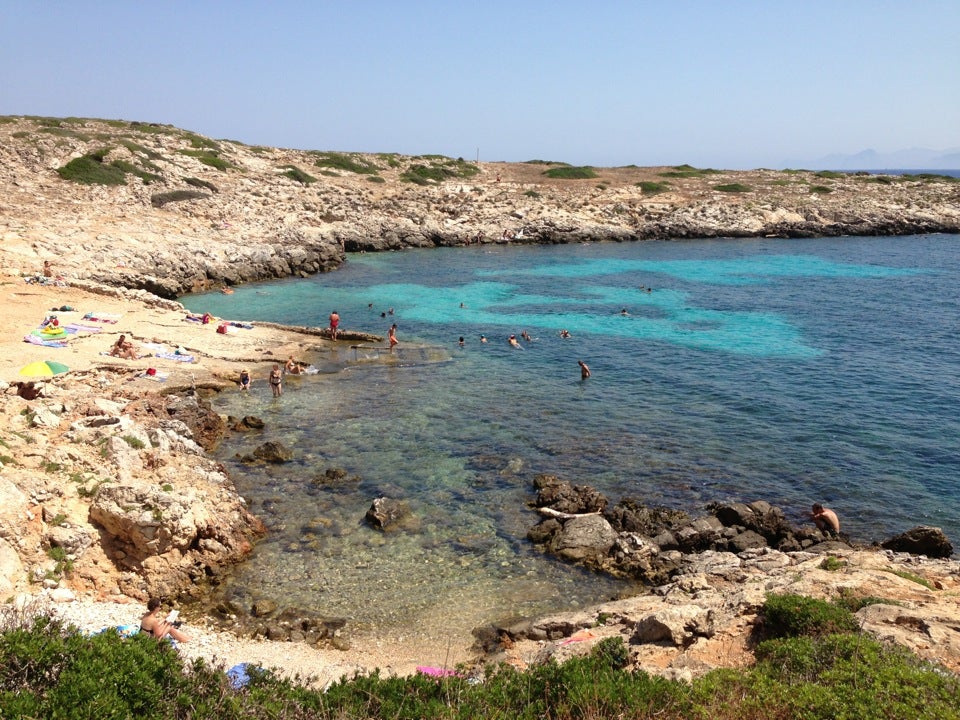
Some Levanzo beaches can be reached very easily on foot, such as the gravel beach of Cala Dogana, located near the port and the town. A ten-minute walk away is Cala Fredda, with sand and gravel. Even the pebbly Cala Faraglione can be reached easily, walking along the seafront. For Cala Tramontana (with gravel and rocks but entirely surrounded by nature), however, it is preferable to use taxi-boats, a service that is available for all the beaches and rocky coves, as well as for Cala Minnola, characterized by a flat cliff embraced by a pine forest, and Cala Calcara, a small rocky bay framed by flora.
2) Enter the Grotta del Genovese
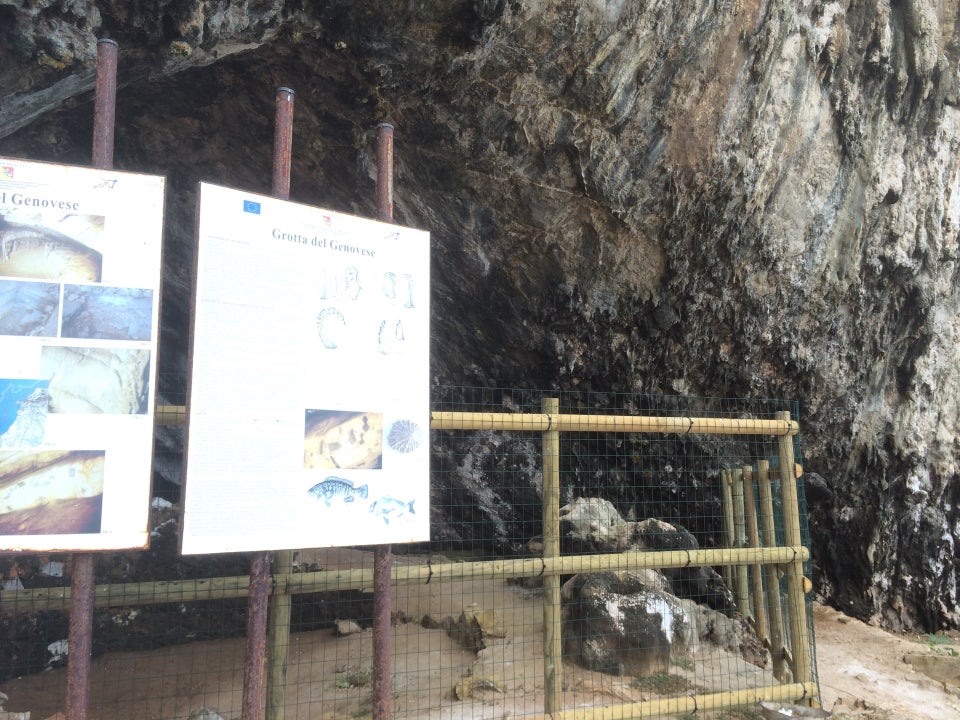
The Grotta del Genovese represents one of the most important Sicilian archaeological sites, with Neolithic inscriptions and Paleolithic paintings depicting large animals and people. These rock carvings are found in the so-called back cave (hidden until 1949) which is accessed via a tunnel from the entrance chamber. Visits must be booked, and guided tours include transport, by boat or jeep depending on the meteomarine conditions, the entrance and the tourist guide. Whether you arrive in the area by sea or by land, you will need to walk a path and comfortable shoes are recommended.
3) Go scuba diving, seawatching or snorkeling
The seabed in Levanzo contains archaeological treasures of inestimable value, in addition to being amazing from a naturalistic point of view (also thanks to the protection that is guaranteed by the protected marine area). In front of Cala Minnola there is the wreck of a Roman ship loaded with wine amphorae at a depth of about 25 meters. On the seabed of Capo Grosso there are also anchors, beaks, helmets and other Roman finds dating back to the naval battle of 241 BC. with the Carthaginians. The local diving organizes (in addition to guided tours for naturalistic and archaeological diving) snorkeling and seawatching excursions where the fish approach the coast and you can appreciate the richness of marine biodiversity even without being licensed divers.
4) Circumnavigate the island
The tour of the island of Levanzo by boat is another of those activities that you absolutely cannot miss. It can be done both thanks to organized tours with driver, and independently by renting a boat or a rubber dinghy. The tour starts from the small port of Cala Dogana and lasts for a couple of hours. After the Faraglione you will arrive at the sea cave of the Buco, where you can take a swim, and then continue towards Punta Chiappara, Punta Sorci and Capo Grosso. Then you will see the solingas Cala Nucidda and Cala Fredda.
5) Savor the local gastronomy
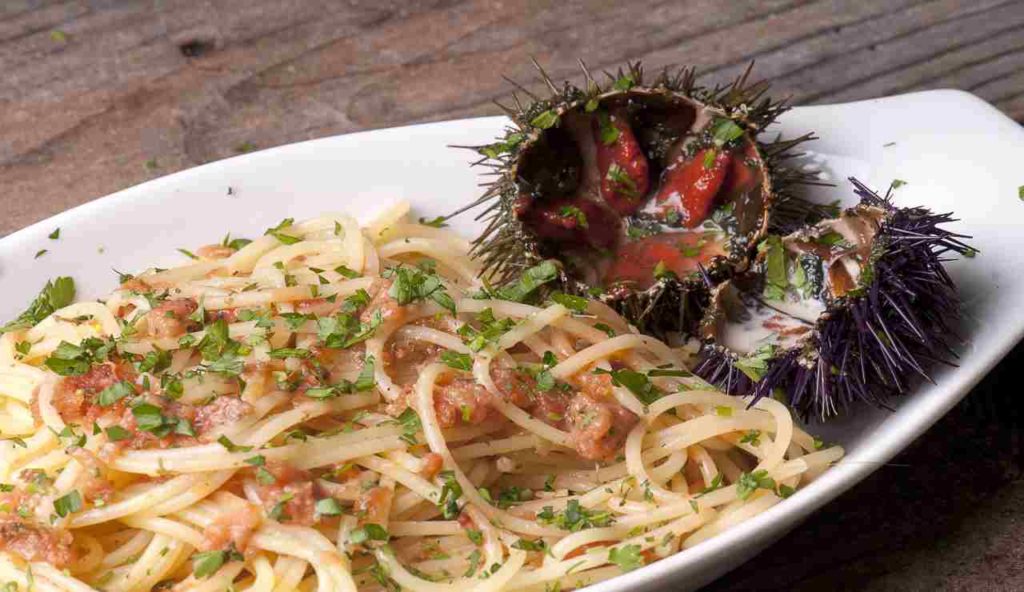
The local cuisine is based on fish, categorically fresh and zero kilometer. Typical dishes are frascatula (cous cous in fish soup) and cabbucio alla levanzara, a pizza dough sandwich with cold cuts or fish. Top dishes also include spaghetti with sea urchins, pasta with limpets and those prepared with bottarga and tuna lattume.
5 things to do in Marettimo
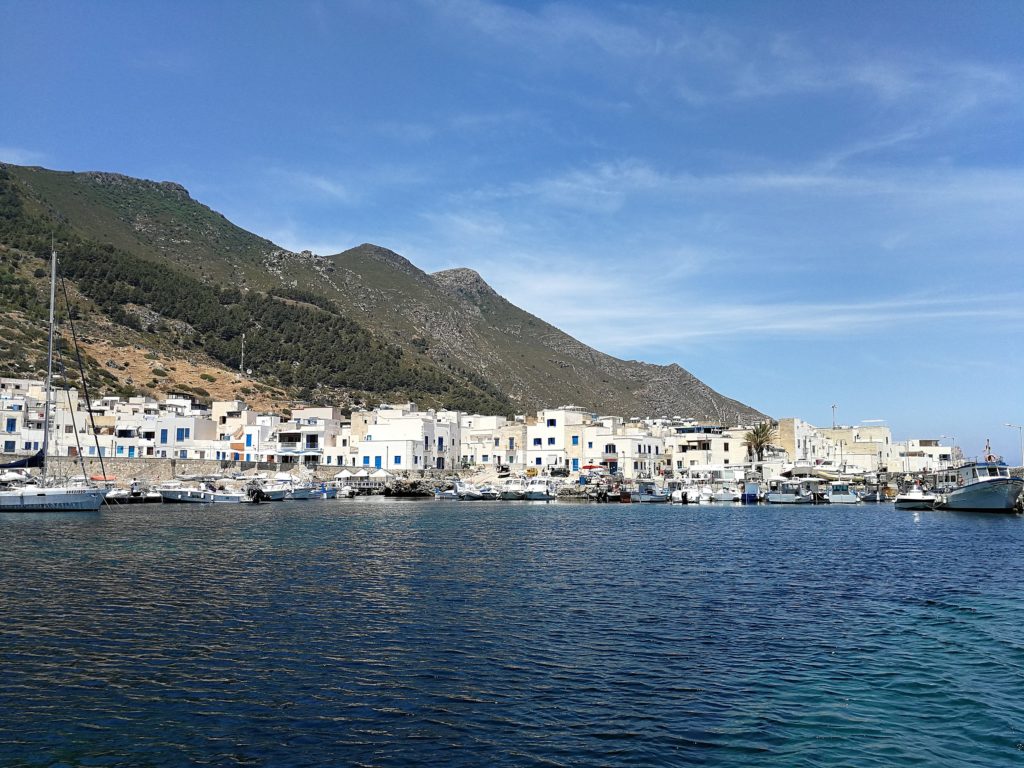
1) Go to the sea
There are not many beaches on the island but they are located in natural contexts that do not leave indifferent, such as Cretazzo, a gravel and pebble beach that can be reached along a path that is not easy to cross. The Rotolo beach is instead close to the center, and it is made of gravel and pebbles. The beaches of Scalo Vecchio and Scalo Nuovo (near the center) are pebbly. The Praia dei Nacchi is made of gravel and sand, and can be reached by walking for about twenty minutes. To go for a swim in the coves of the Manione and Scalo Maestro rocks it is preferable to take a taxi-boat, while the Zotta Muletti cliff can also be reached on foot via a path of medium difficulty.
2) Go around the island by boat
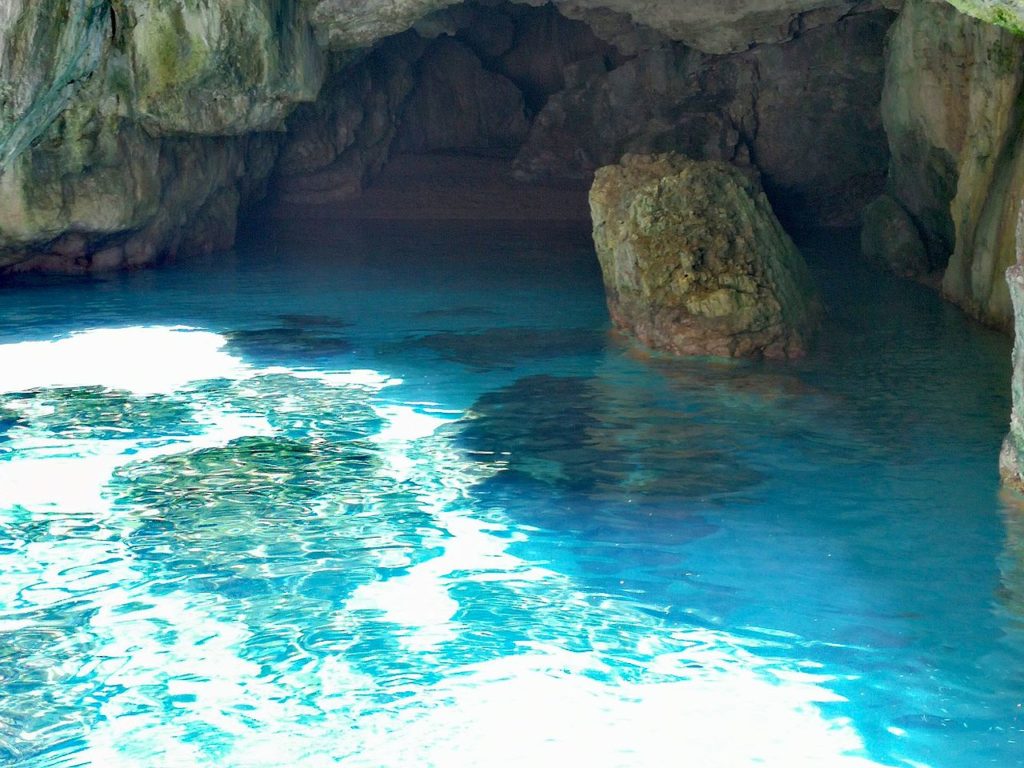
The tour of the island by sea is a must. There are so many emerged or semi-submerged caves along the coast, all of a certain charm: Grotta del Cammello, Grotta del Tuono, that of Pipa, Grotta Bombarda, Grotta Perciata, that of the Nativity and that of Lovers deserve a visit and, why not , a dive. There are several boatmen who organize the excursion, which also include baths in the coves, starting from the ports of the Old or New Scalo. After Punta Mugnone, on the west coast, you will enter zone A (integral reserve) of the protected marine area of the Egadi islands, and you will discover even more surprising landscapes.
3) Visit the Castle of Punta Troia
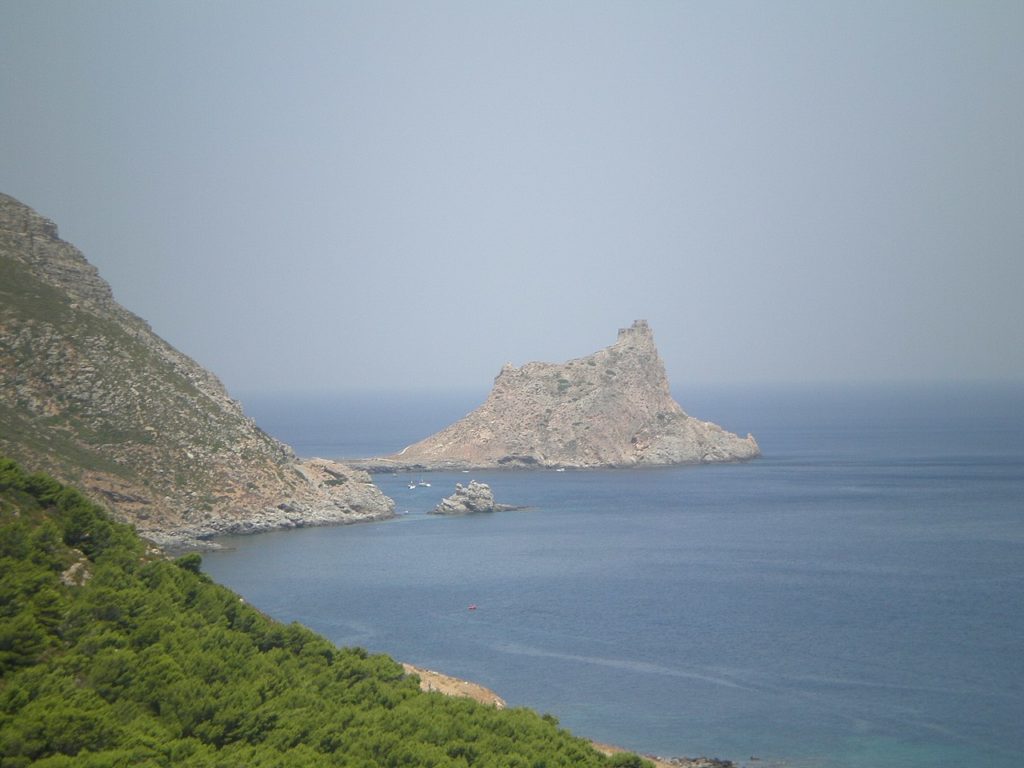
Where the Castle of Punta Troia currently stands, on the promontory of the same name, a defensive tower was built by the Saracens in the 9th century, then renovated by the Norman king Roger II of Sicily. But it was Francesco Ferdinando d’Avalos, Spanish viceroy, who gave the fortification its current shape in the sixteenth century, also expanding it with a cistern and a small church. The cistern was later used as a prison. Since 2011, the castle is open for free to visits, located 116 meters above sea level and reachable via a steep path or by boat (saving you a stretch of walking). There is a Museum of Prisons and the “Monk Seal” Observatory, dedicated to monitoring the marine nature reserve that surrounds the Egadi Islands.
4) Reach the archaeological area of the Roman Houses
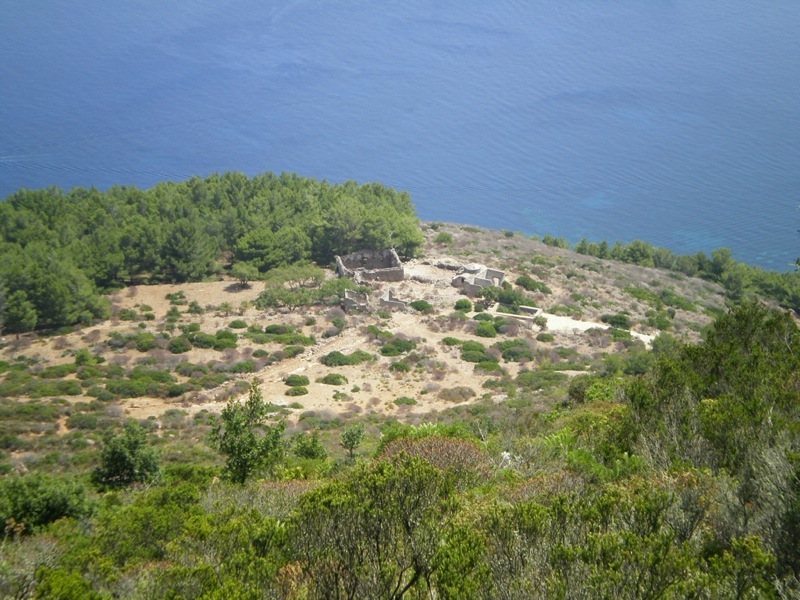
In the middle of the island, in a strategic position half an hour walk from the town (about 250 meters high), you can visit the ruins of Roman houses, structures built in the fourth century in almost opus reticulatum, and of a Byzantine church (11th century) built by the Basilian monks, among which there are large aligned boulders that suggest prehistoric settlements. From here you can also enjoy an amazing panorama.
5) Taste the Marettimara gastronomy
The typical dishes of Marettimo are obviously based on fish. As an appetizer, salted fish (sardines, mackerel, angiove) or dried fish (zerri, menole, cicerelli) stands out, while the fresh fish (which abounds here) is prepared in a simple way, roasted and accompanied with ammogghio, a cold sauce based on of tomatoes, garlic and oil, or seasoned with salmoriglio (oil, vinegar, garlic, lemon, oregano, salt, chilli and parsley). But also ghiotta fried with onion, celery, tomato, capers and olives. Or in matalotta, in a pan with tomato, olives, capers, garlic and parsley. The main dish is pasta with lobster in broth. The pisci r’ova are egg fritters and breadcrumbs with tomato sauce, sugar and cinnamon. On March 19, when the patron saint of the island is celebrated, the traditional sweet of San Giuseppe is prepared: the pignolo, consisting of small pieces of dough (flour, eggs, lard, sugar, cinnamon, vanillin and white wine) fried, sweetened generously with honey and flavored with orange peel.

